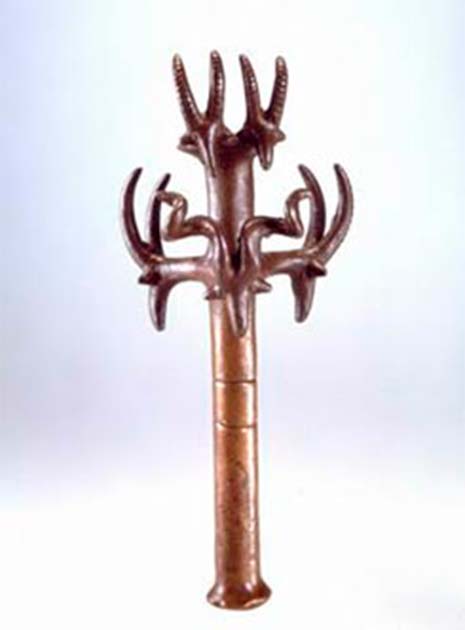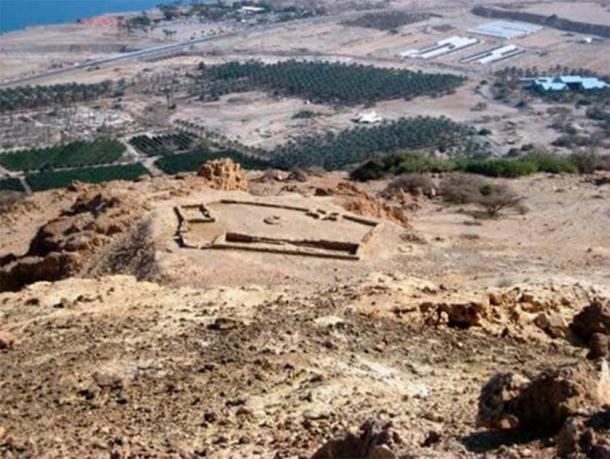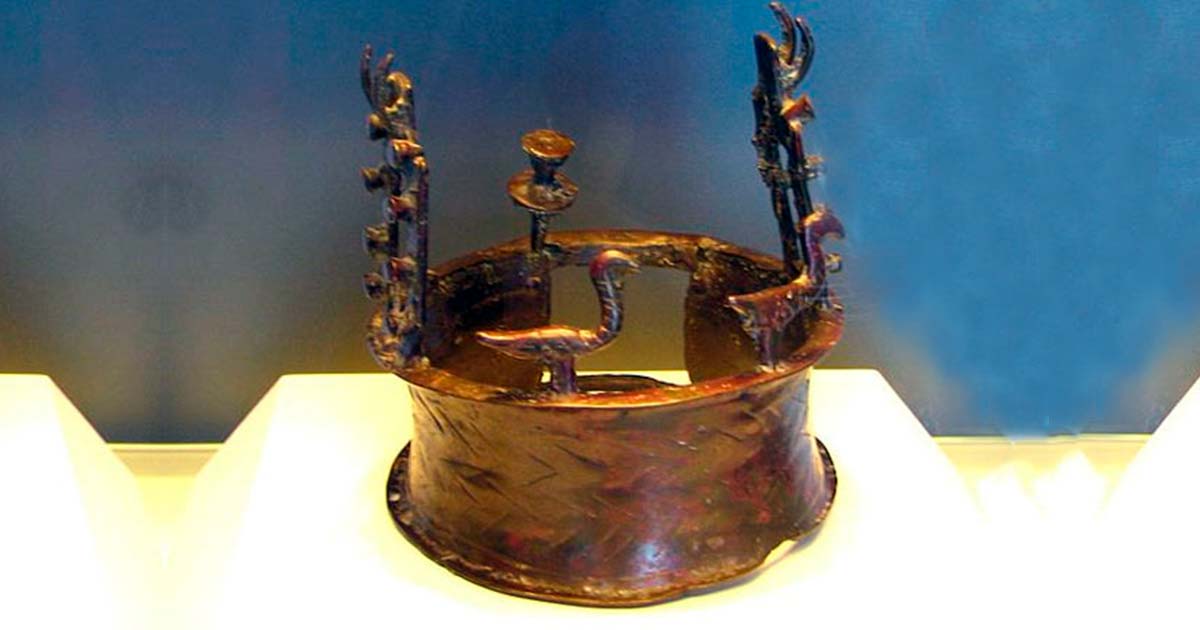Ancient Majesty: The Oldest Crown Ever Found
The oldest known crown in the world, which was famously discovered in 1961 as part of the Nahal Mishmar Hoard, along with numerous other treasured artifacts, was publicly revealed in 2020 in New York University's Institute for the Study of the Ancient World as part of the 'Masters of Fire: Copper Age Art from Israel' exhibit.
The ancient crown dates back to the Copper Age between 4000–3500 BC, and is just one out of more than 400 artifacts that were recovered in a cave in the Judean Desert near the Dead Sea more than half a century ago.
Oldest crown, ceremonial artifact
The crown is shaped like a thick ring and features vultures and doors protruding from the top. It is believed that it played a part in burial ceremonies for people of importance at the time.
New York University wrote:
“An object of enormous power and prestige, the blackened, raggedly cast copper crown from the Nahal Mishmar Hoard greets the visitor to Masters of Fire. The enigmatic protuberances along its rim of vultures and building façades with squarish apertures, and its cylindrical shape, suggest links to the burial practices of the time.”
The symbolism of a crown in the past often represented power, authority, and leadership. They could have been associated with individuals of high status, such as rulers, chiefs, or religious figures.
Wearing a crown could have served as a visible symbol of their position and influence within the hierarchical structure of society. Or could have played a role in specific rituals, ceremonies, or important life events. This object was likely associated with religious or ceremonial practices, potentially related to burial rituals or the worship of deities.

Some of the items from the Nahal Mishmar Hoard. (John Bedel).
Artistic motifs
The forms and themes of the artifacts in the hoard strongly suggest their cultic nature. Some decorations indicate a fertility cult, while showcasing the artistic abilities of the Chalcolithic population in the region. These objects were likely used in rituals, including prayers for hunting, grazing, agriculture, and protection.
The abundance and variety of the finds indicate an organized socio-political and religious hierarchy, with evidence of widespread participation in religious rituals and festivals. The significant weight and value of the copper objects highlight the preciousness of copper during that time period.
The Nahal Mishmar Hoard was found by archaeologist Pessah Bar-Adon hidden in a natural crevice and wrapped in a straw mat in a cave on the northern side of Nahal Mishmar, which became known as the ‘Cave of Treasures’. The 442 prized artifacts made from copper, bronze, ivory, and stone, include 240 mace heads, 100 scepters, 5 crowns, powder horns, tools and weapons.
Carbon-14 dating of the reed mat in which the objects were wrapped suggests that it dates to at least 3500 BC. It was in this period that the use of copper became widespread throughout the Levant, attesting to considerable technological developments that parallel major social advances in the region.
Some of these objects are like nothing ever seen anywhere else. The round knobs are usually said to be mace heads, but there is no evidence that any of them were ever used in combat. The remaining objects are even more unusual and unique in style, such as the bronze scepter depicted below

Bronze scepter from the Nahal Mishmar Hoard. Displayed at the Hecht Museum in Haifa. (John Bedell)
The objects in the Nahal Mishmar hoard appear to have been hurriedly collected, leading to the suggestions that the artifacts were the sacred treasures belonging to the abandoned Chalcolithic Temple of Ein Gedi, some twelve kilometers (7,4 mi) away, which may have been hidden in the cave during a time of emergency.

Chalcolithic Temple above modern Kibbutz Ein Gedi. (צולם ע"י מני גל, עין גדי/CC BY 2.5)
Daniel Master, Professor of Archaeology at Wheaton College and a member of the curatorial team, said: “The fascinating thing about this period is that a burst of innovation defined the technologies of the ancient world for thousands of years.”
Jennifer Chi, ISAW Exhibitions Director and Chief Curator, added: “To the modern eye, it's stunning to see how these groups of people, already mastering so many new social systems and technologies, still had the ability to create objects of enduring artistic interest.”
The purpose and origin of the hoard remains a mystery.
Top image: The oldest crown in the world, found in the Nahal Mishmar Hoard. Source: Hanay/CC BY-SA 3.0


















Comments
Daniel Master, Professor of Archaeology at Wheaton College and a member of the curatorial team, said: “The fascinating thing about this period is that a burst of innovation defined the technologies of the ancient world for thousands of years.”
just admit the fallen and dont let the ghost of margaret mead hold your tongue my guy! also, if one remembers rubber disinigrates relatively rapidly, the pieces could be a distillery, of booze ormus or even cannabis...
infinitesimal waveparticles comprise what we call home the earth
manipulatable by thought ability supressed in humans since birth
It’s assumed that these objects were associated with a nearby temple. And the fact that this 'horde’ wrapped in a mat & hidden in a cave was most likely to keep these items out of the hands of looting invaders; whom ever they may have been. I was thinking that it might of been hidden loot from either that nearby temple or another location, but when thinking about it this is not very likely.
I'm going to venture these alleged Eid Gedi artefacts are modern forgeries. They do not resemble anything else ever found, and so were they if genuine made by a people having ZERO contact with any regional or local arts groups in their own cultures? Distances in the area, which is very small really, would make it extremely difficult for these creations to be the unique individuated craftwork of a single workshop, of man or woman. It would be like discovering Stonehenge on a small group of islands only to state that there are no other stone monuments anywhere else there, or to claim its opposite and corollary possibility: that there be other like hoards scatterred over the area. Which could be, though not yet are, so?
These artefacts follow the same system as everywhere else – they use the ancient zodiac discovered at Gobekli Tepe. See martinsweatman.blogspot.com
They look like candle stick holders to me. And their culture looks llike they allow the wax to drip and build up a foundation around the peices. Just what came to my mind.
.
Pages